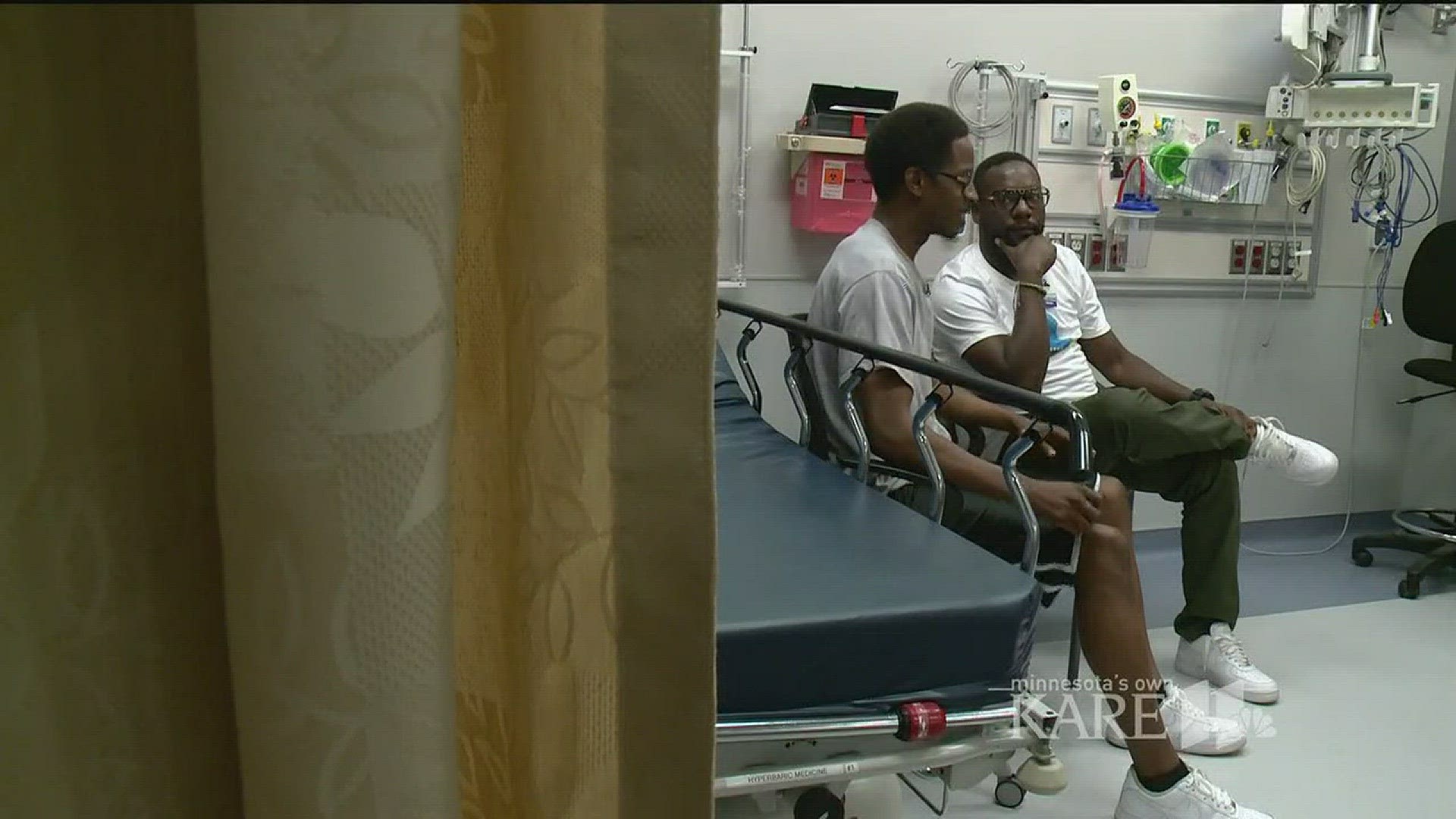MINNEAPOLIS – Violence is a public health problem.
From 2002 to 2011, homicide was the leading cause of death for youth in Minneapolis, according to data provided by the Hennepin County Medical Center.
But the city is trying to intervene and change those numbers through a program called Next Step.
Next Step is a hospital-based violence intervention program at HCMC that connects youth and young adult victims of violent injury to resources and support. The goals of Next Step are to:
1. Reduce re-injury and re-hospitalization for youth who are victims of violent injuries.
2. Support positive development and holistic healing for youth and families who are affected by violence.
3. Help interrupt the cycle of community violence.
The hospital-based violence intervention program has seen about 139 patients. Dorian McCoy, who was shot in the face, is among the group the program has helped.
“(The bullet) went down through my throat and missed my heart and came down and cut a piece of my lung,” he said. “I have a piece of fragment of the bullet still in my jaw.”
McCoy was leaving his apartment complex on Plymouth Avenue, a few blocks east of the Fourth Precinct Police Station in Minneapolis, when trouble showed up.
It's the same location where a child was hit by a stray bullet last spring. It’s also behind the building where Jamar Clark was shot and killed in 2014. Earlier this month, a father was shot and killed in the same area in front of his kids.
The program, which started as a pilot in 2016, aims to help interrupt the cycle of community violence.
Farji Shaheer, a violence intervention specialist, said about 80 percent of violent crime victims chose to participate in the Next Step program. The percentage of participants who are not readmitted to HCMC for a violent injury is 3 percent, compared to a 40 percent national average.
“We see victims regardless of the nature of crime. It could be innocent bystanders. People at the wrong place at the wrong time,” Shaheer said. “When I was growing up there was a time when I wanted someone to reach out to, to give me positive information. A lot of times I made mistake in my life and those mistakes could’ve been undone if I had that one person I can call on to give me the right kind of guidance.”
Shaheer is helping folks like McCoy take a step in the right direction.
“He is a mentor. He gives me more insight with the program and on real life stuff,” McCoy said. “It is (nice) to see brothers that are like that and positive and really want to help and don’t want anything in return.”
HCMC hired three youth development workers who began July 2016. The one-year pilot program was funded through grants from the City of Minneapolis Health Department, Minnesota Office of Justice Program.
Additional funding has been secured for another two years at $140,00 per year. Cities in other metropolitan areas like Chicago and Baltimore have similar programs.

